Total Hip Replacement: The Anterior Approach I Your Questions Answered
Aug 22, 2019Richard “Alex” Sweet II, MD
Q: What is the “anterior approach” to total hip replacement?
A: “Anterior” is a medical term used to describe a location on the body more towards the front. Posterior describes a location more towards the back. An anterior approach means that the incision is in the front of the hip joint, near the location of your front pants pocket.
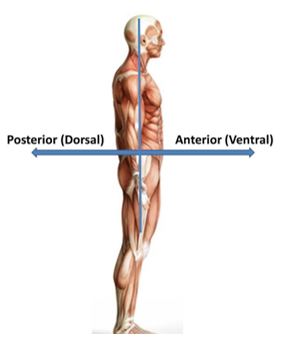
Q: Why has the anterior approach become so popular?
A: The anterior approach, despite common belief, has been around longer than the more traditional posterior approach. Historically it was used for surgery on pediatric hips as well as other procedures. However, the approach was not popularized for hip replacement until more recently when a special table was designed to facilitate the procedure. This table is known as the “Hana Table.” Using the anterior approach, I am able to perform the entire hip replacement without cutting any muscles, something that is impossible from a more traditional posterior approach. Additionally, the anterior approach allows for better assessment of leg length and implant positioning. Patients are able to mobilize faster and have less pain postoperatively with the anterior approach, facts that has been well studied and documented in the orthopedic literature.
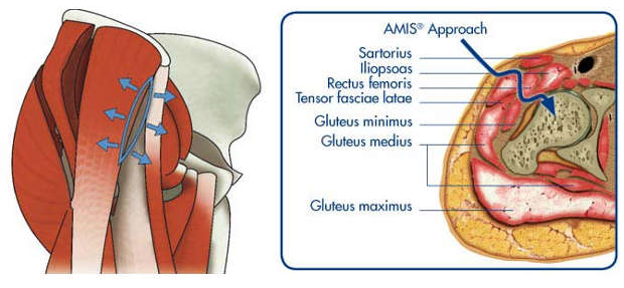
Q: What is the “Hana Table” and do you use it?
A: The Hana table is a specialized surgical table designed specifically to improve the surgical exposure of the hip and thus the results for the anterior approach to total hip surgery. The table helps secure the patient during surgery, makes exposure of the hip joint easier, facilitates proper implant positioning, and allows easy and precise X-ray verification of implants to ensure long lasting results of your hip replacement. I personally always use the Hana table for my anterior approach to hip replacement and believe that it makes the operation both easier and safer for my patients.
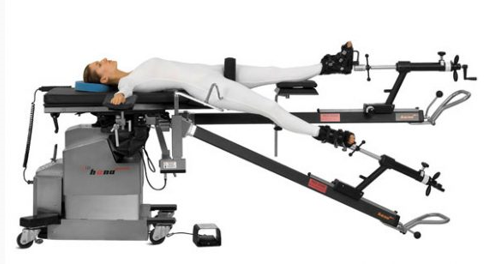
Q: How important is “implant positioning?”
A: The hip joint is made up of two parts, a ball and a socket. Both are replaced in total hip surgery. Without going into excessive detail, the components can be tilted and spun in nearly any direction when implanted. Through years of meticulous research, we know the positions that are safest and lead to good long term outcomes. Malpositioned components can lead to increased wear of the plastic liner and early failure of the hip. But most commonly malposition implants lead to a higher rate of hip dislocations, a devastating complication of total hip replacement. The subtleties of implant malpositioning can lead to many complications, and ensuring accurate placement is the most crucial part of any hip replacement. The anterior approach is famous for minimizing these complications to an absolute minimum.
Q: Is the anterior approach really a better approach for hip replacement?
A: This is not an easy question to answer. If you were to poll 10 different orthopedic surgeons you would likely get 10 different answers. All surgeons have certain innate biases based on their training and experience. I do personally believe that the anterior approach is a better way to perform a hip replacement than the more traditional posterior approach. And the reasoning is multifactorial
1. With the patient lying on their back for the anterior approach I am able to precisely judge the component positioning. When patients are placed on their sides for the posterior approach they tend to lean forward or backwards during surgery, often times moving as the surgery progresses, making accurate placement of the components difficult.
2. Additionally the X-Rays that I am able to obtain while the patient is secured on their back to the Hana table are of much better quality, leading to improved understanding of the position of the implants throughout surgery. This produces high quality data from the beginning of surgery until the end. Most surgeons utilizing a posterior approach do not use X-ray or use one solitary image. From an anterior approach I can use X-ray technology from multiple angles and views throughout the entire case, to truly understand your anatomy and get a properly positioned implant. I know when I leave the surgical suite that your hip is in optimal position to endure the rigors of life for a long, long time.
Q: Are the risks the same or different for an anterior approach?
A: The real answer is a little of both. Most of the biggest risks of surgery which are infection, complications from anesthesia, blood clots and medical complications exacerbated by surgery are present no matter how the surgery is done. These are the risks that every surgeon tries to minimize. However, the anterior approach does have risks that are particular to it, as well as many benefits of reducing or nearly eliminating the risks of other approaches. Most surgeons have a surgical approach that they perform best in their hands. For me, I believe that the anterior approach allows me to obtain the most reliable results while minimizing complications.
Q: Is the recovery different?
A: Although you have probably heard things about how the anterior hip is a faster recovery from surgery and is “minimally invasive,” you need to be aware that there is no minimally invasive way to cut and remove bone from your body. This is a big operation and that is independent of approach or surgeon, no matter what you may hear in the media. That being said the anterior approach offers several advantages over other approaches
1. It is the only approach that requires no cutting of muscles. The entire approach is done in between the thigh muscles, which can greatly improve recovery time.
2. Certain muscles around the hip are absolutely vital to your mobility. When these muscles are damaged or cut it can lead to a serious limp post operatively. Because no muscles have to be cut or released with the anterior approach like with other approaches, there is no limp after recovery. You will be back to walking with a normal cadence much faster with an anterior approach, a fact that has been well studied.
3. A small incision can be used to do this operation with minimal complications because we can use X-ray to ensure the entire surgery goes as planned.
4. With less damage done to your muscles and soft tissues using the anterior approach, pain is usually significantly less immediately after surgery.



 Our patients can receive MRI imaging onsite at both our Louisville and New Albany Clinics.
Our patients can receive MRI imaging onsite at both our Louisville and New Albany Clinics. Providing the latest advances in orthopedic surgery is our specialty.
Providing the latest advances in orthopedic surgery is our specialty. We take a unique, multidisciplinary approach to pain management.
We take a unique, multidisciplinary approach to pain management.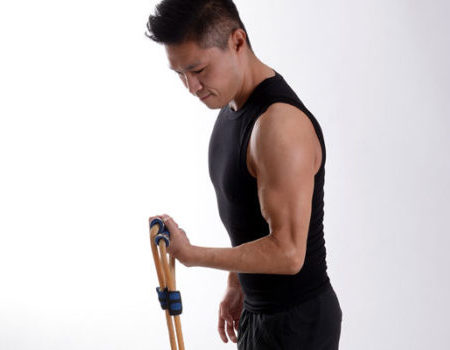 Our physical therapists use advanced techniques to help restore strength and mobility.
Our physical therapists use advanced techniques to help restore strength and mobility.  We provide comprehensive, conservative care for a wide variety of foot and ankle conditions.
We provide comprehensive, conservative care for a wide variety of foot and ankle conditions. We offer same- and next-day care to patients with acute injuries.
We offer same- and next-day care to patients with acute injuries. Get back in the game with help from our sports medicine specialists.
Get back in the game with help from our sports medicine specialists. 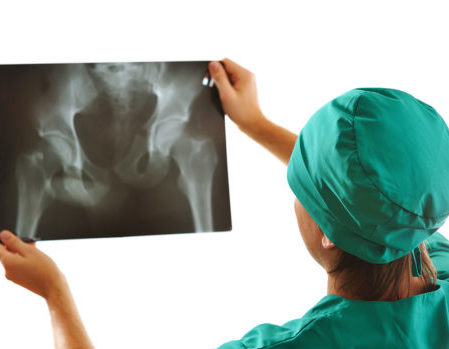 Our centers are equipped with a state-of-the-art digital X-ray machine.
Our centers are equipped with a state-of-the-art digital X-ray machine.